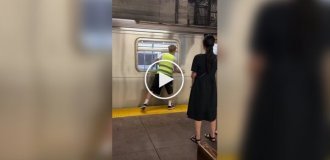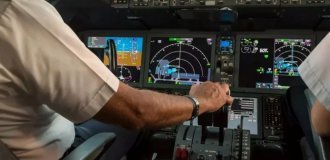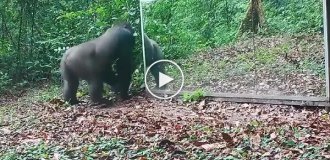Light tank T-2 (8 photos)
An old German tank was recently restored in the open area of the Lenino-Snegirevsky Military History Museum

People from the “Leibstandarte Workshop” (as it was written on the minibus) worked at the tank - they pulled up the tracks. I myself can’t stand it when someone watches my work, that’s why I didn’t start very annoyingly flickering in front of their noses.







Light tank T-2 / Pz.II / Pz.Kpfw.II
In 1934, the German military command decided to quickly develop an intermediate model of a light tank in order to temporarily fill the troops with armored vehicles until the planned T-3 / Pz.III and T-4 / Pz.IV tanks entered service. This is how the light tank T-2 / Pz.II / Pz.Kpfw.II appeared, which was initially called Tractor 100 or LaS 100 in the chains of secrecy. The development contract was awarded to Henschel, Krupp and MAN. After comparative tests of the presented samples, the model from MAN, which was tasked with improving the chassis, seemed the most promising. The rest of the work was entrusted to Daimler-Benz, as well as MIAG, Wegmann and Famo.
Light tanks T-2 / Pz.II / Pz.Kpfw.II were the main striking force of the German tank divisions during the invasion of France. More than 1,000 of these tanks took part in the operation, most of them in frontline units. In 1941, T-2/Pz.II tanks took part in the attack on the USSR, although on the Eastern Front it quickly became clear that their firepower and armor protection were insufficient. The T-2 / Pz.II tank was created primarily as a combat training vehicle. The first production T-2A / Pz.II Ausf A tanks were produced in 1935. Military tests showed insufficient engine power of 130 hp. ((97 kW)). The next modification of the T-2B / Pz.II Ausf B tanks had thicker frontal armor and a more powerful engine of 140 hp. (104 kW), and its weight reached 8 tons.
In 1937, a new light tank model was introduced - the T-2Ts / Pz.II Ausf C. It had reinforced armor and a new chassis with five road wheels, which became standard for all subsequent modifications. In 1938, modifications of the T-2D / Pz.II Ausf D and T-2E / Pz.II Ausf E light tanks using torsion bar suspension were created. This made it possible to increase the maximum speed on paved roads, but slightly worsen the cross-country performance.
The last modification in the T-II series of light tanks was the T-2F / Pz.II Ausf F model, produced in 1941-1942. The thickness of the frontal armor of these vehicles was 35 mm, and the side armor was 20 mm. The weight of the tank increased to 10 tons. Experts believed that this vehicle achieved a good balance between speed and armor protection.
The hull and turret of the light tank T-2F / Pz.II Ausf F are welded. The driver's seat was located in the front part of the hull, the seats of the other two crew members were in a circular rotation turret, armed with a 20-mm cannon with 180 rounds of ammunition and to the right of it - a 7.92-mm machine gun with 1,425 rounds of ammunition.
A reconnaissance vehicle was developed on the basis of the T-2 / Pz.II light tank, but its production was carried out in very small batches.
In the early 1940s, a model of an amphibious light tank was created in Germany. The engine, through a special drive, rotated a propeller fixed to the shaft, which ensured that the vehicle moved afloat at speeds of up to 10 km/h. Later, a model with two screws appeared. About 100 of these vehicles entered service by 1942 under the designation T-2 / Pz.II amphibious tank.
These vehicles were later withdrawn from combat service and converted into tank destroyers, with effective 76.2mm anti-tank guns captured from Soviet forces in battle. Such vehicles were designated Marder, and were soon replaced by Marder II with 75 mm German anti-tank guns. In total, approximately 1,200 tanks were converted. Until 1944, factories in occupied Poland produced self-propelled artillery units, which were 150-mm howitzers mounted on the chassis of a T-2 / Pz.II light tank.





















